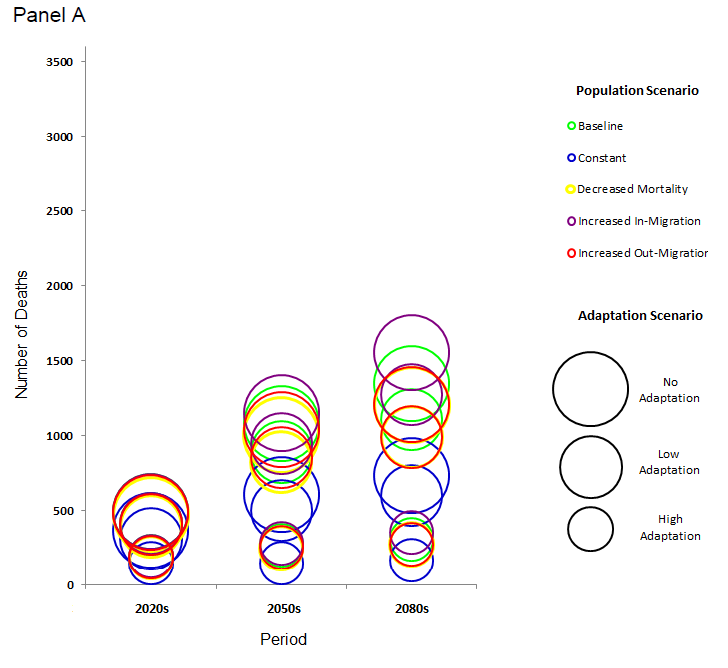

Published in Environmental Health Perspectives, the study’s findings point to substantially higher heat-related mortality under RCP 8.5 and substantially reduced deaths under RCP 4.5 through the 21st century in NYC. These findings highlight the implications of increased greenhouse gases for public health.
Researchers developed population and heat adaptation models implementing demographic scenarios to characterize potential changes in NYC and simulate population response to heat increases until 2100, with one of the main interventions in heat adaptation being the use of air conditioning. Five different scenarios served to project population in NYC: Baseline, Decreased mortality, Increased In-Migration, Increased Out-Migration, and Constant.


The median number of annual mortality estimates varied significantly depending on RCP, population change, and adaptation scenarios. A Constant/High adaptation scenario produced the fewest heat-related deaths annually during the 2080s, with 167 deaths under RCP 4.5 and 379 deaths under RCP 8.5. On the other hand, the Increased In-Migration/No Adaptation scenario showed the most annual deaths during the 2080s, projecting 1552 annual deaths under RCP 4.5 and 3331 under RCP 8.5. These projected deaths can be compared to the annual 638 heat-related deaths between 2000 and 2006.


Researchers noted that the relative risk estimated for heat-related mortality remained relatively constant during the first part of 20th century. On the other hand, relative risk decreased from the 1970s to the 2000s, with an apparent substantial adaptation to heat. Researchers state on their report they believe increased access to air conditioning to be the primary cause for the apparent heat adaptation.
The paper states this is the first study to present projections of heat related mortality until the end of the 21st century while incorporating assumptions of heat adaptation based on historical mortality data from over a century.
The study was conducted in part through the Consortium for Climate Risk in the Urban Northeast, which is supported by the CPO’s Regional Integrated Science and Assessments program.
Access the full paper: http://dx.doi.org/10.1289/EHP166









